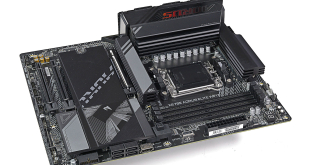While not everything is clear about Intel Corp.’s new microprocessor introduction plans, it looks like the company has finalized its desktop chipset launch schedule. According to a media report, Intel’s new core-logic sets aimed at enthusiasts will debut in mid-May. Such a release timetable will allow Intel and its partners to demonstrate new solutions at Computex Taipei 2014 trade-show early in June.
VR-Zone web-site reports that Intel Z97 chipset, which is designed for new-generation enthusiast-class PCs, will debut on the 11th of May, 2014. It is noteworthy that the core-logic will debut after Intel begins to sell microprocessors that belong to “Haswell refresh” family in mid-April and before the company introduces its code-named Broadwell microprocessors in the third or the fourth quarter of the year.
Just like current 8-series Intel chipsets, the new 9-series core-logic sets – Z97 and H97 – will support various central processing units in LGA 1150 form-factor as well as general functions found on today’s platforms. Expect Intel 9-series chipsets to support six Serial ATA-6Gb/s ports, 14 USB ports (with up to six ports in USB 3.0 mode), PCI Express 3.0 x16 (via CPU, reconfigurable in case of Z97 only), PCI Express 2.0 x8 and so on.
There are three important enhancements that the Z97 and H97 bring: support for solid-state drives in PCIe M.2 form-factor (PCI Express 2.0 x2 interface with up to 1GB/s maximum bandwidth), Intel device protection with boot guard technology as well as Intel Rapid Storage technology with support for PCI Express-based storage drives.
As usual, Intel’s Z-series chipset (Z97) will support overclocking of microprocessors as well as Intel Dynamic Storage Accelerator. The H-series core-logic (H97) will not support overclocking/performance tweaking knobs, but will feature Small Business Advantage platform tech.
In general, both Z97 and H97 will be very similar to today’s platforms, but will be able to boost performance of solid-state drives to 1GB/s and will also enhance security. Those who already own PCs based on Z87 and H87 chipsets will hardly need to upgrade this year, at least before next-gen Core i-series 5000-sequence “Broadwell” processors arrive.
Intel did not comment on the news-story.
KitGuru Says: Numerous companies explain slow progress of desktop PCs with low demand by the end-users. But if the progress is slow, why upgrade?
 KitGuru KitGuru.net – Tech News | Hardware News | Hardware Reviews | IOS | Mobile | Gaming | Graphics Cards
KitGuru KitGuru.net – Tech News | Hardware News | Hardware Reviews | IOS | Mobile | Gaming | Graphics Cards




Surely Intel should be thinking harder about what consumers want. Small gains in energy efficiency are great for i3 office drone machines, but hardly get enthusiasts queueing to upgrade.
Within existing technology kicking the graphics off high end chips and replacing with two extra cores (non hyperthreading to avoid competing with the workstations) would make for a far more attractive offering. If a better heat spreader made a two core 5Ghz turbo possible on selected chips they would have something the marketing department could really get their teeth into!
“Numerous companies explain slow progress of desktop PCs with low demand by the end-users.”
For whatever reason, Intel itself is slowing down the progress intentionally. Maybe because they see AMD as not trying hard enough, or because the jump to 14nm FinFET is going to cost a heck of a lot more than they think. Thus they try to maximise whatever they have now and delay the tech jump for as long as possible ?.
Intel is not even trying to diversify their desktop cpu offerings, they seemed to expand more on laptop chips and distribute them to different OEMs, helping them in segmenting the market. Or was it to close off AMD’s mobile APU offering to the OEM ?.
Price dumping and offering “incentives” were the tricks used before , I am sure they never stopped.
Considering enthusiasts are paying big money for upgrades, why is Intel not pushing for dual socket motherboards ?. GPU vendors do SLI/Crossfire with 2, 3 and sometimes 4 cards at play. All of those cost way more than a SINGLE CPU!. Surely there is a market for dual socket boards that are workstations rather than servers.